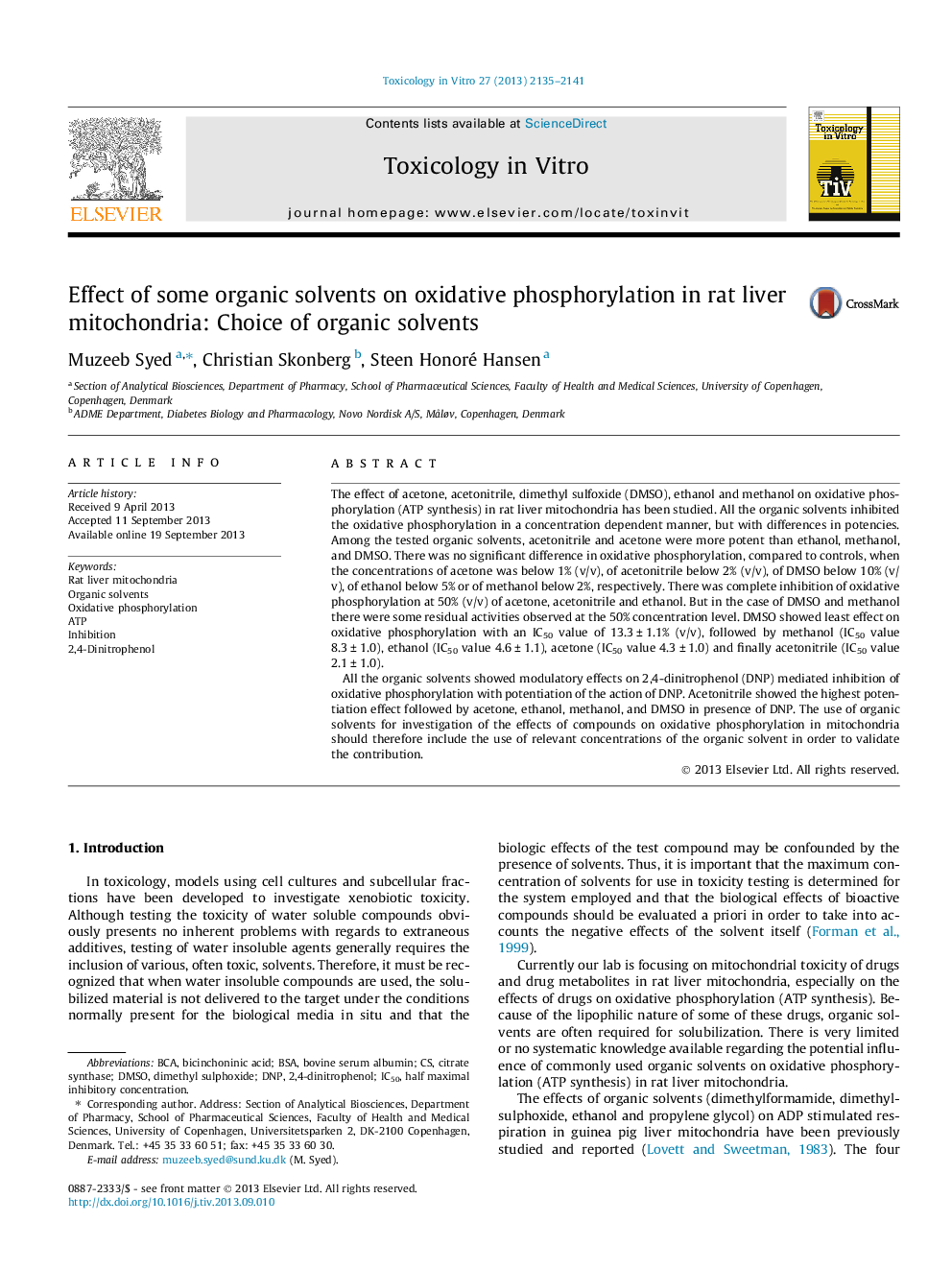| Article ID | Journal | Published Year | Pages | File Type |
|---|---|---|---|---|
| 2602529 | Toxicology in Vitro | 2013 | 7 Pages |
•Commonly used organic solvents inhibited oxidative phosphorylation (ATP synthesis) in rat liver mitochondria.•Acetonitrile and acetone were strong inhibitors of ATP synthesis compared to ethanol, methanol and DMSO.•All the organic solvents showed potentiation of the inhibition of 2,4-dinitrophenol.•Selection of solvent and concentration of solvent used for oxidative phosphorylation were critical.
The effect of acetone, acetonitrile, dimethyl sulfoxide (DMSO), ethanol and methanol on oxidative phosphorylation (ATP synthesis) in rat liver mitochondria has been studied. All the organic solvents inhibited the oxidative phosphorylation in a concentration dependent manner, but with differences in potencies. Among the tested organic solvents, acetonitrile and acetone were more potent than ethanol, methanol, and DMSO. There was no significant difference in oxidative phosphorylation, compared to controls, when the concentrations of acetone was below 1% (v/v), of acetonitrile below 2% (v/v), of DMSO below 10% (v/v), of ethanol below 5% or of methanol below 2%, respectively. There was complete inhibition of oxidative phosphorylation at 50% (v/v) of acetone, acetonitrile and ethanol. But in the case of DMSO and methanol there were some residual activities observed at the 50% concentration level. DMSO showed least effect on oxidative phosphorylation with an IC50 value of 13.3 ± 1.1% (v/v), followed by methanol (IC50 value 8.3 ± 1.0), ethanol (IC50 value 4.6 ± 1.1), acetone (IC50 value 4.3 ± 1.0) and finally acetonitrile (IC50 value 2.1 ± 1.0).All the organic solvents showed modulatory effects on 2,4-dinitrophenol (DNP) mediated inhibition of oxidative phosphorylation with potentiation of the action of DNP. Acetonitrile showed the highest potentiation effect followed by acetone, ethanol, methanol, and DMSO in presence of DNP. The use of organic solvents for investigation of the effects of compounds on oxidative phosphorylation in mitochondria should therefore include the use of relevant concentrations of the organic solvent in order to validate the contribution.
